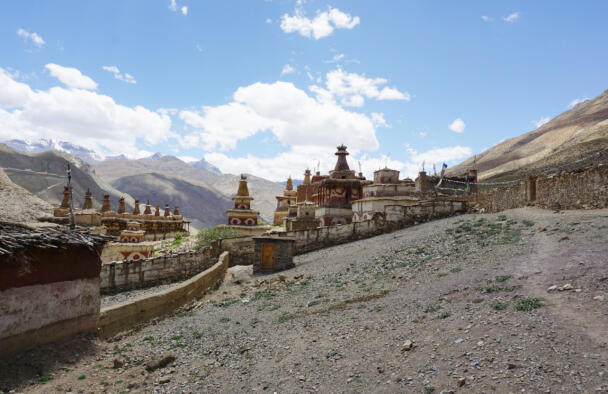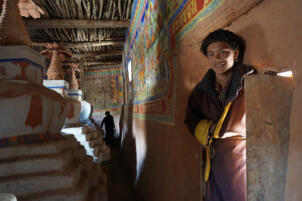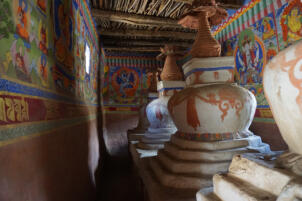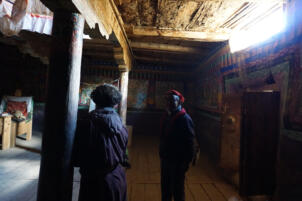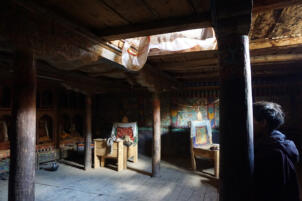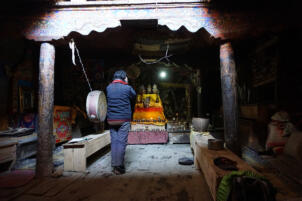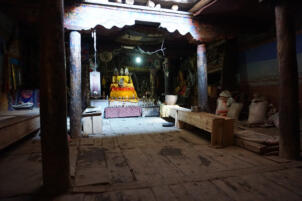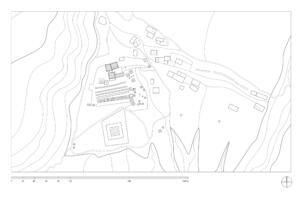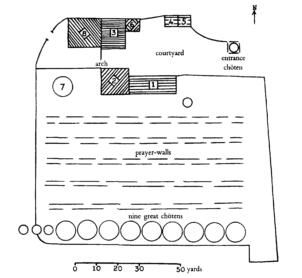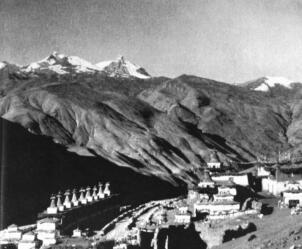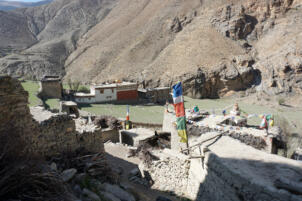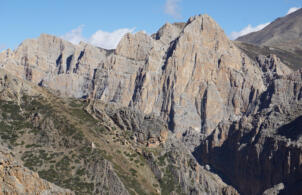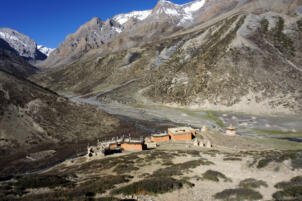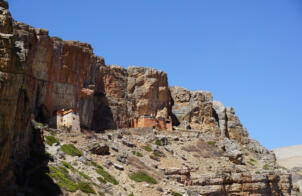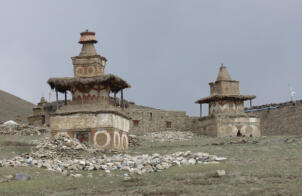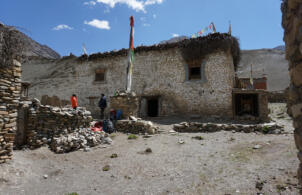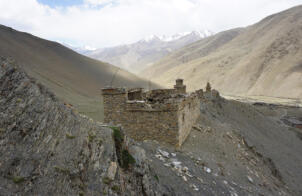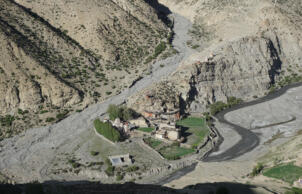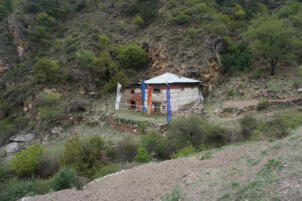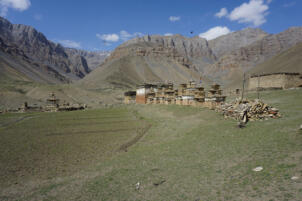Nepal
Nyisal Yangtse
Yangtse Monastery
Coordinates: 29°29’45.00” N, 83° 5’54.77” E, elevation 3900 meters.
The impressive monastery of Yangtse, also named Yang-tsher (gYas-mtsher), meaning ‘right-side settlement’, is located in the uppermost part of Dolpo, in the Panzang (Ban-tshang) valley, at a distance of only 12 kilometres to the Tibetan border. The monastic complex with the religious name Island of Enlightenment (byang-chub gling) was errected near the village of Nyisal, on a levelled platform 120 metres above the river valley. According to Snellgrove the monastery of Yangtse (Yang-tsher) was founded by Religious Protector Glorious and Good (1476-1565). The earlier monastery of Margom located nearby, up on the cliffs above Nyisal was founded by Merit Intellect (1456-1521), and obviously became too small for the growing community.
The total area of the Yangtse monastery – together with the temples, courtyards, adjoining buildings and rows of chörten, – measures 6600 square metres with a perimeter along the enclosing wall of 410 metres. The ensemble consists of three temples and a great number of chörten. Some are located near the temples, but most of them stand on the southern and eastern side of the temples, for example an impressive row of nine large chörten with a prayer wall in front flank the southern side. Between the southern chörten row and the building complex lies a stony field structured with rows of mani-walls, which are oriented in east-western direction, occupying the central area of the compound. The entrance to the walled area is located on the eastern side, where a door-chörten gives access to the first courtyard. Another door lies on the south side of the surrounding wall. On the west side of this longitudinal courtyard is the entrance to an older courtyard, which give access to the three temples and the residental building.
Temple no. 1, also named chörten hall, is located on the southern side of the courtyard, with its entrance faces north. The one-storey temple has the form of a narrow hall with an interior of about 18.00 x 4.00 metres, containing a row of eight chörten and an obviously repainted mural decoration. The room is lit by two windows on the north side and two windows on the south side of the room. The temple no. 2 lies directly next to the temple no. 1, on its western side. From the entrance on the ground floor one crosses low rooms used as stables, and then, via a staircase, reaches the anteroom of the temple on the upper floor. The floor area of the interior is about 8.00 x 9.00 metres. The ceiling is supported by by six pillars, an open lantern to the upper floor illuminates the room. The temple no. 3 lies opposite temple no. 2, on the northern side of the ensemble. Between the two buildings, a roofed area leads to the entrance on the south side of the temple, which forms the anteroom of the hall. The assembly hall has a trapezoidal floor plan, the room depth is about 10 metres, on the front wall the width is 7.80 metres, on the back wall 8.60 metres. Likewise in temple no. 2, the interior is structered by six pillars with an open lantern to the upper floor that illuminates the room. On the northern side shelfs and an alter with an impressive collection of statues are located.
On the western side of the temples a great chörten is said to contain the relics of the founder. Its base covers 9.00 metres on every side. On the southern side of the monastic compound another very large chörten with a square base of about 25.50 metres is situated. Photos taken in the year 2005 show that in this period the chörten was already under construction.
References: Snellgrove, David. Himalayan Pilgrimage. A study of Tibetan religion by a traveller through Western Nepal. Oxford 1961: 85-92, 130, 138. Snellgrove, David. Four Lamas of Dolpo: Autobiographies of Four Tibetan Lamas (15th–18th Centuries). Volume I, Oxford 1967, Volume I, Oxford 1967: 2, 3, 11, 14-15.
Photo Documentation


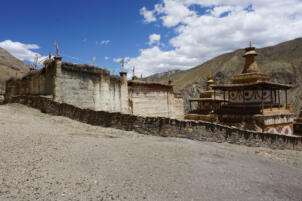
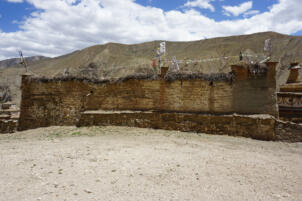
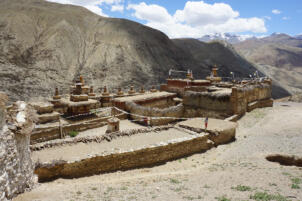
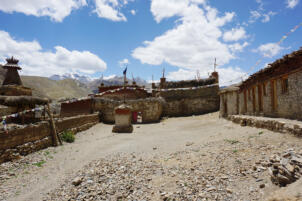
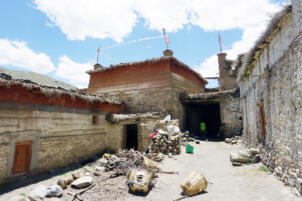
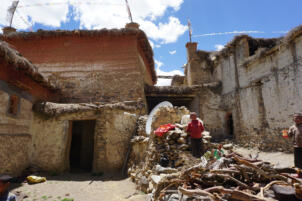

Interior
Site Plan
More from

